Lubricating grease consistency
A grease consistency or penetration score indicates grease consistency or stiffness to help predict how it will migrate, stay, or flow in a typical grease application. Therefore, lubricating grease consistency or NLGI grade is the first and foremost requirement. During this test, a double tapered cone is allowed to sink freely into a grease cup for 5 seconds at 25°C under its weight. Finally, the cone’s distance traveled into the grease is measured and reported as penetration in a tenth of a millimeter (0.1 mm). Thus, penetration is the depth, measured to an accuracy of 0.1 mm to which a standard cone sinks into the grease. For example, a 28.5mm cone’s distance is a 285 penetration score (285x 0.1 mm). In short, the cone will penetrate more into a soft grease. Therefore, a higher penetration value indicates a softer lubricant.
As per NLGI, greases are available in nine consistency grades ranging from fluid (NLGI 000) to a semi-fluid to a firm block (NLGI 6). Therefore, grease penetration is calculated with the NLGI cone penetration chart using ASTM D217 Standard Test Methods for Cone Penetration of Lubricating Grease.
| NLGI Consistency # | Worked Penetration in 0.1mm [*] | Visual Characteristics | Food Analogy |
|---|---|---|---|
| 000 | 445-475 | Very soft- just enough thickener to keep oil from running | Ketchup |
| 00 | 400-430 | Very soft- just enough thickener to keep oil from running | Applesauce |
| 0 | 355-385 | Soft- Still flowing | Brown Mustard |
| 1 | 310-340 | Soft | Tomato Paste |
| 2 | 265-295 | Normal grease (like a cream) | Peanut Butter |
| 3 | 220-250 | Semi-solid | Vegetable Shortening |
| 4 | 175-205 | Moderately Stiff | Frozen Yogurt |
| 5 | 130-160 | Stiff | Smooth Pate |
| 6 | 85-115 | Very stiff (Hard) | Cheddar Cheese |
[*] Penetration worked @25°C ASTM D217, DIN ISO 2137 in 0.1mm
Some grease suppliers use descriptions such as NLGI Number 1.5, which indicates that the grease is between NLGI Numbers 1 and 2.
Penetration procedures to measure grease consistency
- Undisturbed penetration
- Unworked penetration
- Work penetration @60 double stroke
- Prolonged work penetration
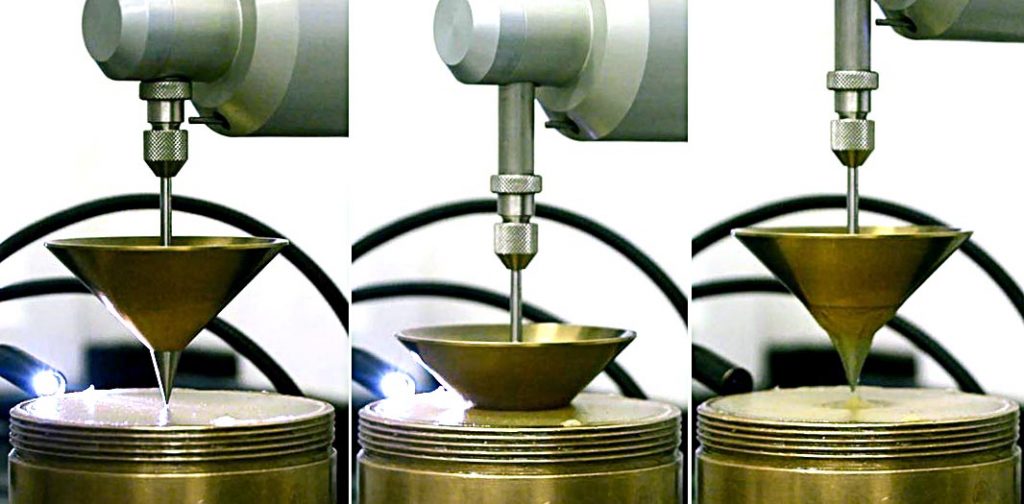
Undisturbed penetration
In undisturbed penetration, the penetration value is measured without any disturbance. It is not a standard procedure but used for evaluation of hardening or softening of grease during storage.
Unworked penetration
Unworked penetration is frequently reported along with worked penetration @60 strokes. A grease sample is transferred from the grease container to the test cup with minimum disturbance. It is not considered definite, but Less difference between unworked and worked @60 strokes is a desired property of grease.
Work penetration @60 double strokes
Worked penetration @60 double strokes is a standard reporting method. In this method, at the temperature of 25°C, grease is worked in a standard grease worker for 60 times (60 double strokes). Tested immediately using cone penetration, worked penetration @60 stroke is generally considered a standard.
Prolonged work penetration
This procedure tests the penetration after worked at 10,000, 100,000 or higher double strokes at the temperature of 25-30°C. Prolong work penetration is a common practice to predict the stability of grease. After worked with a grease worker, the grease sample is brought back to 25°C in one and a half hours. The grease sample is subject to worked again at 60 strokes at 25°C followed by penetration recorded.
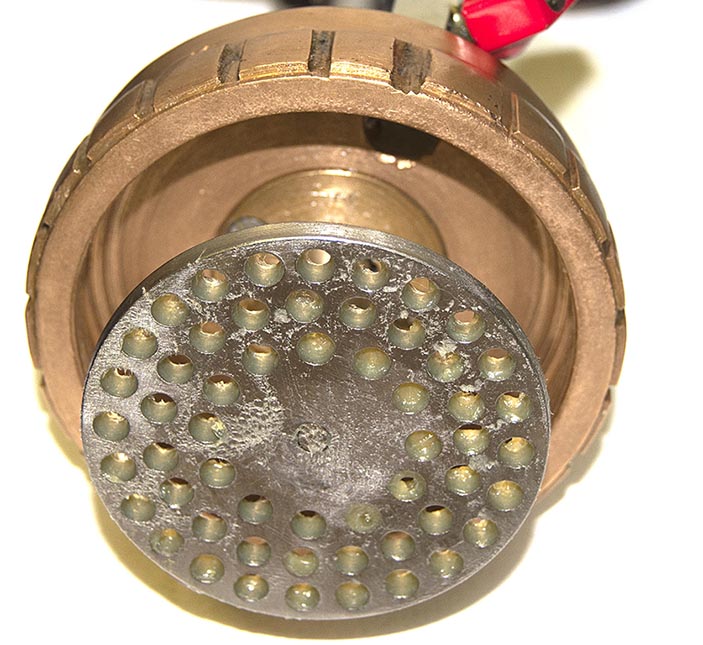
Motorized grease worker
Grease Consistency (grades) and applications
NLGI Consistency number 000
Consistency number 000 grade grease is like a liquid with the least amount of thickener. Excellent for the lubrication of sliding surfaces, guides, open-gear lubrication, and outdoor equipment with long lubrication pipes in centralized lubrication systems requiring low-temperature pumpability. It has many uses in single-line lubrication systems of commercial vehicles. In the same way, it is a preferred lubricant for wheel-flanges in stationary and mobile lubricating equipment.
NLGI Consistency number 00
NLGI 00 is also a liquid-like grease used for open gear, spur gears with friction surface lubrication, and centralized lubrication systems requiring low temperature and long-distance pumpability. Good for spur, bevel, and worm gears in open or enclosed gearboxes operating under normal and severe conditions. Preferred for the lubrication of sliding surfaces, guides, sliding bearings, and roller bearings required frequent relubrication.
NLGI Consistency number 0
A semi-fluid grease that is soft and still flowing with good low-temperature pumpability in centralized lubrication systems. Excellent lubricant for loaded roller sliding bearing. Recommended for the lubrication of needles and multiple row roller bearings, chains, and flexible chain couplings. Enclosed and open gearboxes or enclosed roller and plain bearings.
NLGI Consistency number 1
NLGI 1 grease has a soft, tomato-paste-like consistency. An excellent lubricant for the lubrication of needles and multiple row roller bearings. Similarly found uses in automotive wheel bearings and most electric drive applications.
NLGI Consistency number 2
Number 2 has a peanut-butter-like consistency, and it is a widely used lubricating grease consistency. NLGI 2 grade is a standard grease for most industrial and automotive applications. In the same way, Lithium grease in NLGI 2 grade is the most common multipurpose grease for automotive, industrial, and marine applications. Excellent lubricant for the plain and antifriction bearings operating under moderate load and at medium speeds. It is a good lubricant for use in most flexible couplings.
NLGI Consistency number 3
NLGI 3 grease has a semi-solid appearance and is a common lubricant in automotive, industrial, marine, and agricultural applications. Excellent for antifriction bearings, wheel bearings, factory sealed ball bearings, and some flexible couplings. Grade #3 greases have good sealing properties to protect the equipment and surfaces against pollution, corrosion, and environmental impact.
NLGI Consistency number 4
NLGI Grade 4 grease has a moderately stiff consistency. Hence, it is a common lubricant for water pumps lubrication. Number 4 grease has uses in agricultural equipment, water pumps, and other high-speed, lightly loaded applications.
NLGI Consistency number 5
NLGI grade number 5 grease has lower bleeding or oil separation. Hence, it is a stiff grease with a consistency like smooth pate. Lithium grease in NLGI 4 grade has less than 0.4% oil separations and a further lower bleeding score in NLGI-5 grade. Lubricating greases in NLGI 5 grades are not very common but have an excellent performance in applications where a low score of bleeding or oil separation is required. For example, in overhead conductors and high-speed applications.
NLGI Consistency number 6
NLGI 6 is not a common grease grade. Lubricating grease with NLGI-6 has a very stiff consistency like a block of Cheddar Cheese. A lubricating grease with extremely low oil separation has found its uses in Pillow-block lubrication. It is also an excellent lubricant in high-speed applications where extremely low oil separation is a must.
References:
- Viscosity-temperature Extrapolation (ASTM D341)Standard Practice for Viscosity-Temperature Charts for Liquid Petroleum Products If… Read more: Viscosity-temperature Extrapolation (ASTM D341)
- Dynamic Viscosity and Kinematic Viscosity CalculatorConversion between dynamic and kinematic viscosity Two Calculators are provided… Read more: Dynamic Viscosity and Kinematic Viscosity Calculator
- Mixing Viscosity (Blending) CalculatorMixing Viscosities Calculator: To predict blend viscosity of two or… Read more: Mixing Viscosity (Blending) Calculator
- Lithium Grease: Composition, Formulations, and ApplicationsLithium grease is widely regarded as one of the most… Read more: Lithium Grease: Composition, Formulations, and Applications
- Calcium Grease: Composition, Formulations, and ApplicationsCalcium Soap Greases: Tallow (animal fat) based calcium greases were… Read more: Calcium Grease: Composition, Formulations, and Applications


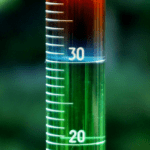
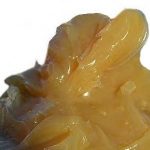
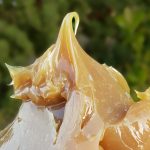
fabrico grasa de jabon de calcio con cal hidratada y sebo animal desde hace 30 años, este año tengo un problema a cuando la fabrico y le hago las pruebas de penetracion la dejo en NLGI 2 el resultado promedio esta en 275 y las dejo ligeramente basicas, después de una semana de fabricada le mido la penetracion y la consistencia y en algunos casos cambia 50 puntos es decir pasa de 275 a 320. no he cambiado la forma de producir ni las condiciones de presión y temperatura, que puede ser lo que este ocasionando este fenómeno y que puedo hacer para evitarlo
I have been making calcium soap grease with hydrated lime and animal tallow for 30 years. This year I have a problem when I make it and do the penetration tests. I leave it at NLGI 2. The average result is 275 and I leave them slightly basic. After a week of manufacture, I measure the penetration and consistency and in some cases it changes 50 points, that is, it goes from 275 to 320. I have not changed the way of producing or the pressure and temperature conditions. What could be causing this phenomenon and what can I do to avoid it?
La causa más probable es la pérdida de agua ligada de la red de jabón de calcio hidratado, lo cual puede verse agravado por una estructura de jabón débil.
También puede suceder si la grasa se mantiene agitándose durante el envasado o si se envasó sin pasar por molino en línea. Para obtener mejores resultados, se recomienda encarecidamente utilizar molino en línea si se llena directamente desde el calderín de grasa.
Revise también si el rendimiento (yield) fue correcto, es decir, que la cantidad de grasa obtenida coincida con la esperada según el contenido de jabón. Si el rendimiento está bien, la causa más probable es efectivamente la pérdida de agua ligada.
Asimismo, sugiero comprobar la penetración después de 1.000 golpes para ver si la grasa muestra mejor estabilidad o no.
Otros posibles factores incluyen mala formación del jabón, calidad del sebo o molienda inadecuada.
The most likely cause is loss of bound water from the hydrated calcium soap network, which can be aggravated by a weak soap structure.
It may also happen if the grease is kept stirring during filling or if it was filled without inline milling. For best results, it is highly recommended to use inline milling if filling directly from the grease kettle.
Please also check whether the yield was correct — i.e., that the grease quantity matches the expected output based on soap content. If the yield is fine, then the most probable reason is indeed loss of bound water.
I would also suggest checking the penetration after 1,000 strokes to see whether the grease shows better stability or not.
Other possible contributors include poor soap formation, quality of tallow, or improper milling.
If worked penetration is 301mm then what will its NLGI grade?
A worked penetration of 301 is borderline between NLGI-1 and NLGI-2, often referred to informally as NLGI 1.5.
If there is a correlation chart between NLGI grades with Apparent viscosity in centipoise, request to help with the table
While it is theoretically possible to construct a correlation table for apparent viscosity among different greases, the task is inherently complex. Apparent viscosity, determined by the ratio of shear stress to shear rate using Poiseuille’s equation and measured in poises as per ASTM D1092, is a nuanced property influenced by various factors in grease formulations.
Attempting to establish a straightforward correlation table encounters challenges due to the intricate nature of these formulations. Greases, even within the same NLGI grade, can exhibit diverse apparent viscosity values based on differences in thickening agents, base oils, and additive compositions.
I am looking for Food Grade NLGI 4 or 5 grease. Let me know where I can buy.
Leonid
I am looking for NLGI 00 Grease for a Putzmeister cement pump unit. What sizes are available and cost?